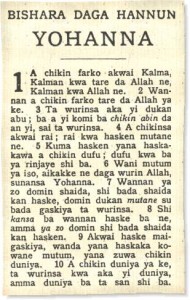
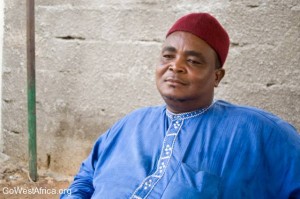
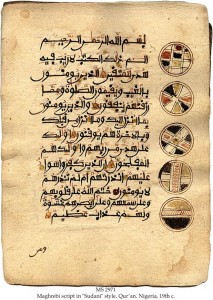
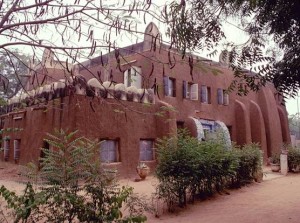
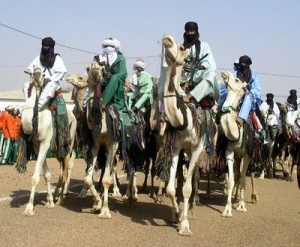
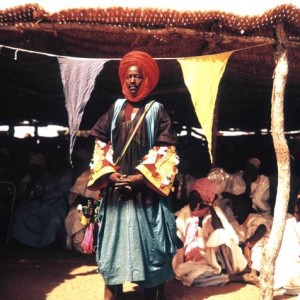
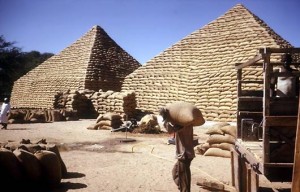
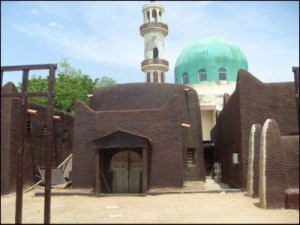
The Moorish Refugees of the Hausa City-States of present-day Nigeria
– By –
Jide Uwechia
The Moors ruled on the Iberian kingdom of Granada, as the last Moorish kingdom in Spain until the 2nd of January in 1492 when they were conquered by the armies of Ferdinand and Isabelle.
The years after the Christian conquest of Granada were filled with acts of outrage such as murder, rape, enslvaement and imprisonment against the Moors of Africa. The acts of outrage grew as the christians consolidated their conquest. In 1499, the bishop Cisneros demanded that all Moors should be baptized into the popish crusader legion of Rome if they were to live as free citizens.
Later the Moors were harrased with with heavy taxes and other impositions. Moorish culture and languages were barred except for the pidgin latin which is now called Spanish.
In 1568 due to the suppression the Moors still living in the town rebeled against the Spaniards but they were defeated, mercilessly massacared and the remnant were deported to the Island of Jamaica, and Hispaniola (Haiti), Florida, and Cuba where they called them the Maroons.
The ones who could escape fled either to the continent of the Americas, or to the coast of Guinea where a Moorish culture thrived and was known as “Criole”. The Moors lived and traded all over Guinea Bissua, Cape Verde, Porto-Novo, Fernanda-Po, Escarvos, Lagos.
Many others headed across the straits to North Africa. From there they headed across the Sahara into the relative safety of the African based Moorish kingdoms and Empires such as Kanem-Bornu, Mali.
North African Political Theatre
Just as the 12 century offensive launched by a sicilian norman prince brought about a response from the almoravids, so the 16th century expansion of the Spanish brought the Ottomans to North Africa.
The Christians crusaders continued their pursuit of the Moors across the straits of Gibraltar. They were anxious about the impact that the refugee Moors would bring into North Africa. They needed to ensure that the Moors would not be planning any counter attacks to retake their lost possessions in Iberia. So the crusaders continued their attacks following their conquest of Greneda in 1492 and occupied the North African coastline.
The Christians enchroachments occured in a pincer movement. Led by the Spanish, the Neapolitans, the Portugese, the Knights of Malta, and the Knights of St John.
In 1505 a succession of the main ports of North Africa fell into Christian hands, including Bougie and Tripoli both in 1510. Tripoli was given to the Knights of the St Johns. Towns which had not been conquered were awed into payment of tribute.
The Moorish refugees were mercilessly hunted. With their wealth and their sophistication and influence, they were quite visible. Haunted by this seemiingly relentless ill fate, the hunted moorish jews and muslim refugees headed down south.
Maghrib To Nigeria
From Tripoli to the Kanem Bornu Empire, which controlled the territories now known as Nigeria, Niger, and Chad, it was about a months walk and two weeks worth of camels’ ride. In the winter times, many mystics walk this path alone by themselves all the way from Nigeria to Libya hoping between Oasis.
Similarly, from Sijilmasa in Morocco to Oudagoust in Mauretania, is a six week journey by camel ride. There are oasis in between the desert route and for millenia it has been known as one of the major tran-saharan highways. It was a route of demographic, cultural and commercial exchange.
The Moorish refugees knew that beyond the desert, in the deep embrace of mother Africa, was a Moorish state known as Kanem Bornu Kingdom which could possibly offer them some safety and dignity if they were ever such things in creation.
So just like Moses did when hunted by the Pharaoh, just like Yehushua did when threatened by Herod, and just as Mohammed when he made the Hejira to Ethiopia, just like the Cartheginians and the Kemtians fled into and across the Sahara from invading armies, so the refugee Moors of Spain headed deep into the protecting depths of the continent, where many of them originally came from.
Into the Saharan Moorish Kingdom of Kanem-Bornu they looked for solace, like those other black Egyptians of 837 A.d. who fled the Turkish army unleashed by a vengful caliph, those Moorish refugees fled back to Beri-beri kingdom of the Kanuris, Kanem-Bornu and the Hausa States of Nigeria.
Kanem-Bornu Empire
The Kanuris of the Kanem Bornu empire are known all through Africa and in Nigeria their modern home state as the Bari-beris, i.e. the Berbers from Libya and the Zhagawas from Sudan.
The Kanem Bornu Empire was originally a southern Libyan based Berber Kingdom that moved its capital from Fezzan in Libya further into the central sahara over the ages. Its origins have been fixed at around the 5th century A.D. but it is probably older.
It spanned all the way from the present Bornu State in Nigeria all the way up to Fezzan and Siwa oasis in southern Libya. Even though the Kanem Bornu Empire moved its capital into the central sahara for strategic reasons, it yet maintained its Libyan territories into the 15th century ad.
Kanem Bornu Empire was the dominant power in the areas around Nigeria, Chad, southern Libya and Niger in the early 15th century. It was the hegemonic power which held the Hausa kingdoms in a form of super-structure. It was intimately connected with events unfolding in North Africa and must have viewed with dis-quiet the enchroachment of the christian popist European forces into Moorish territories.
It received a fair amounts of Moorish refugees both Jews and Muslims whose only hope for safety was within the political protection offered by the one last viable Moorish state still safe in the center of the Sahara.
Who are the Hausas
The Hausas are a group of people in Nigeria. The word hausa simply means “language” in the speech of the people today called the hausas. They are more generally known as “the Habe” by the neighbouring Fulanis, “Gambaris” by the Yorubas. The Arabs refer to them as “Fellata”, a reference to their Egyptian/Sudanic origins where the indigenous peasant farmers are known as the fellas.
For a fact, the early Hausa states had a direct infusion from the population of Egypt between 8th and 9th century A.D. who came to join their brethrens.
Between 829 and 837 the indigenous Egyptians rebelled against their black Arab overlords. The Caliph used a large army of Turkish guards to suppress this revolt. The army subsequently drove off rebel populations from their districts and resettled the areas with slave populations sourced from the south European slave markets of Albanian, Turkey, Bulgaria. The original black population fled for safety via Bilma into Northern Nigeria. See Moustapha Gadalla, “Exiled Egyptians”.
Sultan Bello, the son of Uthman Dan Fodio, a learned Islamic scholar and Caliph of the Sokoto Caliphate attributed the orign of the Hausas of Gobir as Egypt in a book he wrote in the 19th century.
According to Hausa oral traditions “If a questioner ask of you (saying) I Where did the Hausa people have their origin?’ Say (to him) ‘Truly their origin was (from) the Barebari and Northerners’. The Barebaris are the Berbers, and the Northerners refers to the original black people of Northern Africa.” See http://sacred-texts.com/afr/hausa/hau04.htm
Many of these Moorish refugees who fled North Africa by way of the Tripoli – Bornu trans-saharan highway eventually ended up in the dominant Bornu Empire, an old power bloc which had ruled much of Libya, Chad and Nigeria since the 11th A.D. Among the leaders of this group of refugees was a man named Umarusi.
Royal Bornu archives recall that Umaruasi came with manuscripts of the Koran. He came with the writings of many Moorish scholars preserved from the Cordoba library, “and turbans and a sword and spears and shields and the kingly fez and such things and plates…”
Another group of refugees was led by a man called Abdulkarimu-Mukaila to Kano. According to the traditions, he arrived and about 300 Moorish families and Yemenite Arabs.
Another origin myths among the Hausa claim that their founder, Bayajidda, was a Moorish prince who came into the territory as a refugee after losing his army to attacks by the Knights of Malta. It is said that he brought the Moorish sciences such as astronomy, chemistry, metallurgy, knowledge of iron working to Gaya.
Bayajidda was said to have caused a scimitar to be made for him in Gaya. With this scimitar he proceeded to Daura where he freed the people from the oppresive nature of a certain sacred snake who guarded their well and prevented them from getting water six days out of the week (this sounds like some symbolism for some oppressive cults). The queen of Daura gave herself in marriage to Bayajidda to show her appreciation. The two gave birth to seven healthy sons, each of whom ruled the seven city states that make up Hausaland.
Moorish Influences
Among the profitable arts and science introduced by the Moors into Hausa kingdom, was the art of cotton and textile industry. Their quarters became so famous that the cities of Kano and Rano were known as the “Chiefs of Indigo.” Indigo clothing is one of the primary cultural products of the Bluemen, the Barebaris or the Berbers as they are more commonly known to the Europeans. Cotton grew readily in the great plains of these states, and the Moors of Kano became the primary producers of cloth, weaving and dying it before sending it off in caravans to the North Africa and other states within Hausaland. Kano and Kastina axis produced the world famous Moroccan leather which built the foundation of shoe making from Spain to Italy, even today.
The Moors consolidated and advanced the Hausa tradition of walled cities, metallurgy (chain mail armours) writing and publishing, city planning, grand buildings, government administration, irrigation, medicine and surgery, cavalry and horse breeding.
According to the traditions and the tariks, around the 1450’s another more westerly group of Moorish Muslim and Jewish refugees fleeing from defeat in Portugal returned via Morocco Mauretania, and the Senegal River into Africa. They immigrated in large numbers into the Hausa city-states and created a strong Islamic presence. They brought back books from Spain, and North Africa, set up schools and learning centers and developed a vibrant international trading network covering a large part of Africa, middle East, Europe and India. Many members of the group merged with the Fulas or the Fulani (another Berber tribe that lives in the central sahara) and the Bozos.
“White” Turkish North Africa
This was the state of affairs until two muslim champions Khayral-din-barbarosa and his brother Arjun emerged to stem the tide of the Christian conquest. Aruj was kiled in 1517 and his brother Khayral went on to form the Algiers Regency. After the death of Aruj, Khayral solicited the help of the Ottoman turks.
After a series of back and forth battles the Turks had gotten the upper hand by 1581 against the Christian Europeans.
But it worked out well for them in any event. Strange events occured prior to the Ottoman conquest of North Africa. The French, the Mameluks (Georgians and Albanians), the Ottoman Turks, and the Spaniards all hostile to the interest of the Black Moors, all foreigners to Africa, signed a pact of accord and division of sphere of influence in North Africa. But their primary object was the subjugation and everlasting domination of the Moors.
The Ottomans and the Mameluks triggered a massive immigration of the southern European slaves, mercenaries and peasant people into North Africa, in their millions, over the course of the last five hundred years. This has brought about the definitve population and demographic changes that one observes in North Africa. It was the experimental model for the conquest and colonization of America. The same model of colonization was later tried out in North America and it also wrought unbelieveable demographic changes.
Jide Uwechia
August 17, 2009
Sources
http://www.google.ca/search?sourceid=navclient&ie=UTF-8&rlz=1T4ACAW_enCA308CA308&q=ottoman+rule+maghrib
http://books.google.ca/books?id=Thd_klpky9sC&pg=PA152&lpg=PA152&dq=hausa+origin&source=bl&ots=VjfJaZ1yxj&sig=W7Vod2Q_qqnzb1fRSSOslEhIURA&hl=en&ei=IgiHSvjaL4Gqtgfw9NnnDA&sa=X&oi=book_result&ct=result&resnum=9#v=onepage&q=hausa%20origin&f=false
http://books.google.ca/books?id=V7qpKqM2Ji8C&pg=PA258&lpg=PA258&dq=ottoman+rule+maghrib&source=bl&ots=6Zbr1PH6cu&sig=bMXBSRjLqjGARWaUbOuv7SabxYM&hl=en&ei=DNKGSp6iItOJtgeOy9jnDA&sa=X&oi=book_result&ct=result&resnum=8#v=onepage&q=ottoman%20rule%20maghrib&f=false


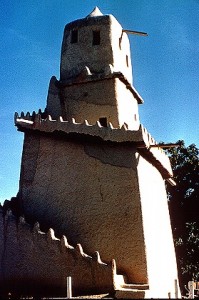
People of North Africa aren’t “white”. Even before migrations from Arabia, Rome, Turkey and the Iberian peninsular, common sense would suggest that they would be a bit paler than the people of the equator because lighter skin allows them to absorb the vitamins they need during the winter when there’s reduced sunlight. Doesn’t mean they weren’t African, and I’m sure there is a trace of Sub-saharan genes in most North Africans whether from Egypt, Tunisia or Morocco. They should be proud of this. Genetic variation will make them stronger!
I’m going to leave my reply in hausa cause that’s what we are reading about wya kya ni ban tama tease na karanta Abu haka sa yanzin na San daga ind a mu hasawa. Mukay da kya ka kira kan ka AMA Baka San kaka nin aan Spain nay ba